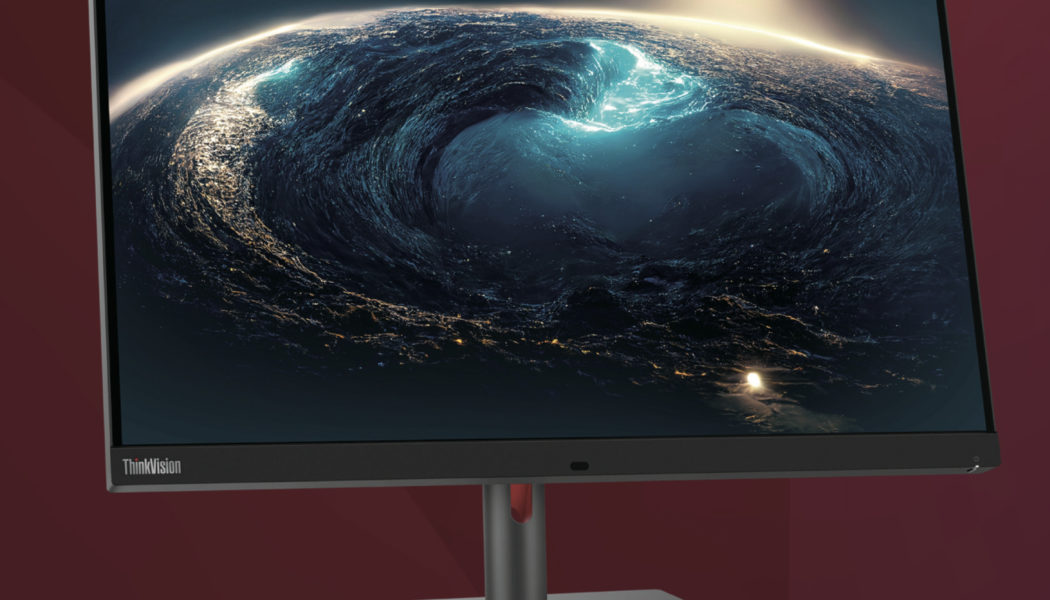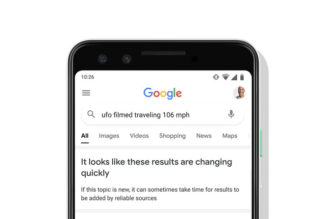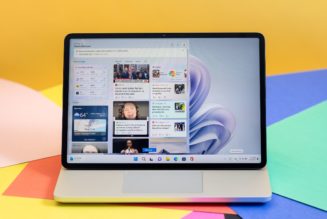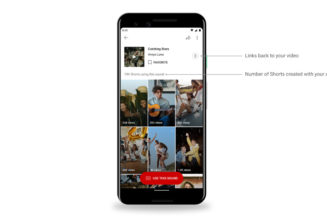They also have USB4, a hub that’d be impressive if it stood alone, and won’t break the bank compared to other displays using the tech.
:format(webp)/cdn.vox-cdn.com/uploads/chorus_asset/file/24308634/Screenshot_2022_12_21_at_09.27.58.png)
Lenovo has announced two 4K monitors using Mini LED tech, and they seem like very interesting choices for someone who wants a nice display but won’t be doing any hardcore gaming. The 27-inch ThinkVision P27pz-30 and 31.5-inch P32pz-30 come packed with 1,152 dimming zones, a bevy of ports, and even the potentially unprecedented ability to send 140W of power to a laptop — and despite the high price points of many Mini LED monitors, they’re both expected to cost well under $2,000 when they arrive in August 2023.
You can connect to the monitors with a single USB-C cable, which Lenovo’s press release says can handle “40Gbps of data and video transfer.” That’s plenty for a 4K monitor running at 60Hz — in fact, Lenovo says you can even daisy-chain two together. That’s pretty standard stuff for a Thunderbolt / USB 4 monitor, but it gets a lot more interesting when paired with the monitors’ uncommon ability to provide up to 140W of power to a laptop. In theory, that means you could plug in a single USB-C cable and get multiple monitors, an expansive USB hub, and enough power for all but the thirstiest of laptops.
The reason that’s in theory is that there actually aren’t actually many laptops on the market today that are even capable of accepting that much power over USB. Apple’s top-of-the-line 16-inch MacBook Pro comes with a 140W power brick, but you’ll only get that much when you’re using MagSafe — over a standard USB cable, you’re limited to 100W. (Even some gaming-focused ultralights top out at 100W.)
Unfortunately, Apple’s MagSafe cable also doesn’t carry data, so you’ll have to choose between 1) a single USB-C cable with 100W of power, video, and data, or 2) plugging your MagSafe cable into the monitor or the wall just for the 140W of power, plus an HDMI or DisplayPort cable to get video to the monitor.
But if and when a laptop does take better advantage of USB Power Delivery 3.1 (which actually allows for up to 240W), the ThinkVisions will be better prepared than most. I wasn’t able to find any other monitors that could pump out 140W from their USB-C ports. The Apple Studio Display maxes out at 96W, and the HP Z40c tops out at 100W. It’s always possible my Google-Fu is failing here, but when I searched for any other monitor boasting those specs, it just brought up pages of dedicated USB Power Delivery 3.1 charging bricks.
:format(webp)/cdn.vox-cdn.com/uploads/chorus_asset/file/24308588/Screenshot_2022_12_21_at_09.11.21.png)
Even if USB-C isn’t your jam or if your laptop doesn’t require anywhere near that much power, Lenovo’s still promising a pretty impressive port layout. In addition to the USB 4 port, the monitors also have two HDMI 2.1 ports (though it’s unclear which flavor, and Lenovo makes no mention of things like variable refresh rate or auto low-latency mode), two DisplayPort 1.4 connectors (one for input, one for output — it’s unclear if that’s for daisy-chaining or mirroring), four 10Gbps USB-A ports, Gigabit ethernet, a USB-C upstream port, and another USB-C port that can charge something like a smartphone at up to 15W. Oh, and, of course, a 3.5mm jack for headphones or speakers.
Aside from having all the connectivity I could ever ask for and a KVM feature if you want to use two computers with one display, these monitors also seem pretty well-rounded. The stand has tilt, swivel, pan, and height adjustments (and can be used vertically if that’s the way you roll) and seems decently bright — Lenovo’s spec sheets say you can typically expect around 600 nits, but the monitors are capable of 1200 nits peak brightness. The company’s also promising they’ll be reasonably good at reproducing color, covering 99 percent of the Adobe RGB colorspace. The 27-inch model will also cover 99 percent of the DCI-P3 space, while the 31.5-inch one is limited to 98 percent.
:format(webp)/cdn.vox-cdn.com/uploads/chorus_asset/file/24308605/Screenshot_2022_12_21_at_09.16.09.png)
Finally, there’s price. Thankfully, Lenovo is following the trend of Mini LED monitors drastically coming down in price; one of its previous 27-inch monitors using the tech had a price tag of $2,399.00, similar to the MSRPs of other displays using the tech from Asus and Samsung. The ThinkVision P32pz-30, meanwhile, will come in at $1,599, and while Lenovo’s current press release lists prices as “coming soon” for the 27-inch model, a previous version referenced it being 1,699 euros (around $1,800 USD), according to Ars Technica. As is often the case, it seems like you’ll have to pay more if you want 4K resolution in a more compact.
Are there better deals in the monitor space? Sure — for my money, I’d probably go with the $1,099 Alienware QD-OLED, though its lack of USB-C charging and connectivity, as well as its gamer aesthetic and feature set, would probably put off most businesses, despite its (in some ways) superior display tech. Cooler Master’s $700 display is also shockingly inexpensive for a Mini LED monitor, but it has the same issue of not being terribly office-friendly. On paper, though, it seems like Lenovo has made some very compelling monitors here, even putting the impressive charging specs aside. Let’s just hope they actually deliver — or that something even better is announced in the months between now and when the ThinkVisions actually launch.









